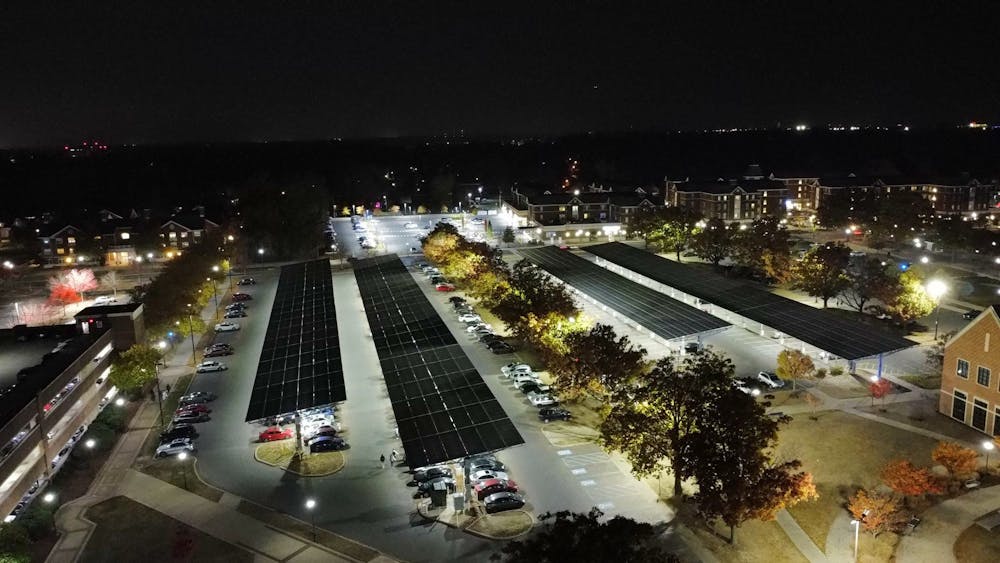By Raeanne Raccagno
Staff Writer
The College was named in The Princeton Review’s 2025 edition of Guide to Green Colleges. It was recognized alongside other institutions that have made efforts to become more sustainable for themselves, students and Earth.
The Princeton Review has examined higher education institutions since 2010 to provide information to applicants wishing to attend universities that value environmental responsibility. This year, it examined almost 600 academies, ranking only the top 50 and listing the rest.
The College did not make the top 50 but is listed among 511 other schools. Paul Romano, sustainability officer and the co-chair for the Environmental Sustainability Council, said he has hope and a plan for the future.
“The college has actually done quite a bit around the sustainability and innovation over the years,” Romano said. “It's kind of experimental and belongs to different strategies. I think as I see my role now is to bring it up to scale.”
According to the methodology, institutions that made the top 50 displayed remarkable sustainability practices, a strong foundation in educating sustainability and a healthy quality of life on campus.
One of the ways Romano intends to rise up in the rankings is to get a Sustainability Tracking, Assessment and Ranking System from The Association for the Higher Advancement of Sustainability in Higher Education. STARS, as it is also known, is a self-reporting framework for colleges to measure their sustainability efforts and gives awards of platinum, gold, silver, bronze and reporter.
“It was good to hear that we were recognized as a Green College, but we'd love to get into their top 50,” Romano said. “So we'd like to compete and get into that top 50, and one of the ways we're going to get there is through this STARS rating.”
There will also be other initiatives and projects happening soon with the council, including a grant awarded by the New Jersey Department of Environmental Protection, along with other New Jersey colleges. ESC will empty the dumpsters on campus and analyze what waste is in them to see what produces the most waste and how it can be converted into other opportunities or prevented altogether.
Before Romano arrived in 2021, the College entered into a power purchase agreement that allowed them to install solar panels with a capacity of 2.5 megawatts on campus. On a sunny afternoon, solar panels could represent a third of the energy used on college grounds, being mainly derived from the solar canopies in the parking lots and on top of buildings.
A push for Romano’s position at the College derived from the 2020-2024 Sustainability Plan, developed by the political science department, which advocated for having a sustainability officer.
When Romano first came to campus, his efforts had to be focused on operational responsibilities after pandemic-related problems in the powerhouse. It took almost two years to restore the plant to its original operation, which now produces power for campus.
About 85% of the College’s power is self-producing. The steam seen around campus is used to heat and cool buildings and produce hot water.
“Since I came on board, the effort that I've been trying to initiate is primarily focused on our energy consumption, because for me, that is the means by which we can be most impactful in terms of climate change,” Romano said.
To discover areas of improvement, Romano and his team completed a comprehensive energy audit of the entire campus, identifying all the light fixtures and mechanical equipment. Now, they’re proceeding into the next stage, which involves replacing about 25,000 light fixtures and various mechanical equipment.
“We expect to reduce our energy consumption, probably close to 20% on that basis alone,” Romano said. “So that's tremendous in terms of financial savings, but it's also tremendous in terms of all associated kinds of emissions.”
Romano and his team are also currently working on a decarbonization plan to reduce carbon emissions by 2040, which sometimes aligns with energy management, but differs in some ways like storage technology. According to him, this technology is desirable because the College can shift its power demand to times when the grid is greener.
In the evening, the power grid produces less emissions. With less available grid energy, the College could use stored energy and ship it to where it’s needed. This would also allow the College to accommodate electric vehicles more efficiently.
Recently, all of the old chargers were replaced with new network chargers to better study who is using them and when. The council will have a public presentation on the decarbonization plan in November.
The council expects to devise a new five-year plan for sustainability to present to the college next year by following the AASHE STARS guidelines.
“I think the greatest thing that any student can do is just become conversant in the issues,” Romano said. “Understand the issues surrounding climate change [and] surrounding sustainable practices. You have to influence change.”







